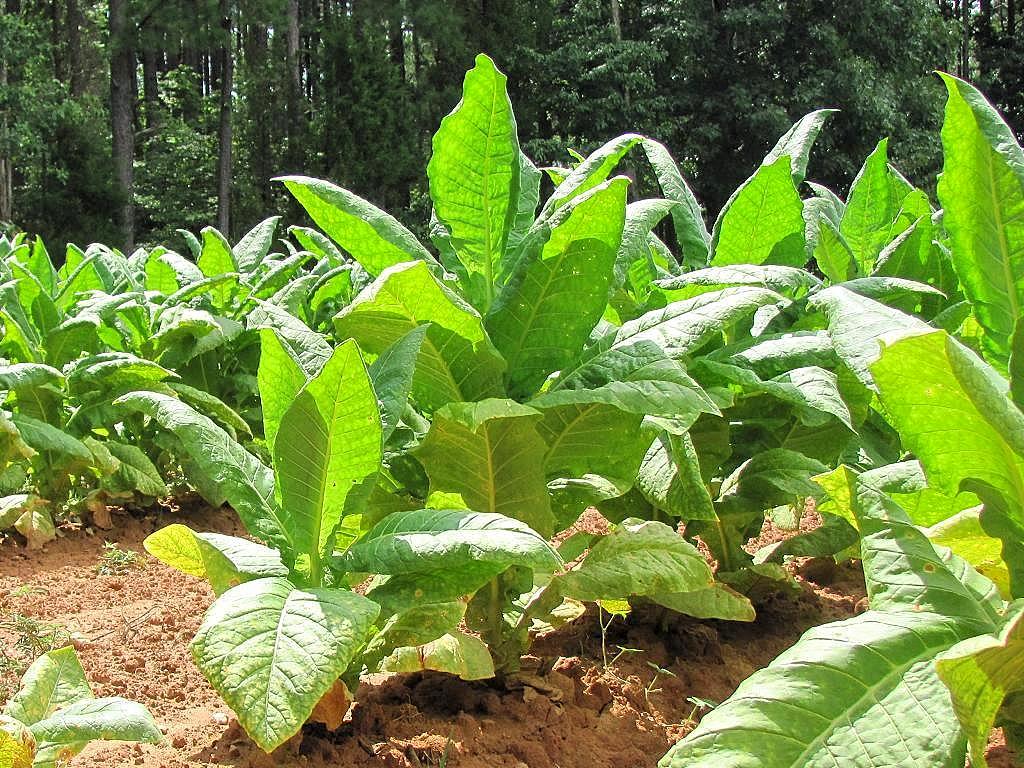 Tobacco plants. A new study found that plants cry when they are stressed. The study used tobacco and tomato plants. Credit: David Hoffman / Flickr / CC BY-NC SA 2.0
Tobacco plants. A new study found that plants cry when they are stressed. The study used tobacco and tomato plants. Credit: David Hoffman / Flickr / CC BY-NC SA 2.0Researchers at Tel Aviv University have discovered and studied sounds that plants make. These sounds are unique and have never been recorded before. They are like clicks, similar to the sound of popcorn popping. Even though the sounds are loud, they are at a high frequency, which means humans can’t hear them.
The researchers found that plants make these sounds when they’re feeling stressed. Different plants make different sounds when they’re stressed. Although we can’t hear them, animals like mice, bats, and insects might be able to hear them, said the researchers.
“From previous studies, we know that vibrometers attached to plants record vibrations, but do these vibrations also become airborne soundwaves – sounds that can be recorded from a distance? Our study addressed this question, which researchers have been debating for many years,” said Prof. Lilach Hadany, the lead author of the study.
Stressed plants ‘cry’ — and some animals can probably hear them. Plants that need water or have recently had their stems cut produce up to roughly 35 sounds per hour, this study found. But well-hydrated and uncut plants are much quieter, making only about one sound per hour pic.twitter.com/csuqLDH87m
— Syed Ehtasham Amin (@ehtvirgo) March 31, 2023
Detecting the frequencies of plant’s sound
In the first part of the research, scientists placed plants inside an acoustic box in a quiet, isolated basement without any background noise. They used microphones that can detect sounds at very high frequencies, from 20 to 250 kilohertz. This range is much higher than what humans can hear, which is around 16 kilohertz.
The scientists positioned these microphones about 10cm away from each plant. They focused mainly on tomato and tobacco plants, but they also recorded the sounds of wheat, corn, cactus, and henbit.
Prof. Lilach Hadany, the study’s lead researcher, findings suggest that there are many sounds in the world around us that come from plants. These sounds contain information that can tell us if there is a lack of water or if the plant is injured.
Prof. Hadany believes that humans can use this information if they have the right tools, such as sensors that can tell farmers when their plants need watering.
When under stress or experiencing health issues, humans have the ability to signal (tell, yell, or cry). Can plants act in the same way? Indeed, they can.
Shown by Khait et al., 2023, Cell 186, 1328–1336. https://t.co/ut7soxGpEW pic.twitter.com/QvERsC7DQT
— Viet-Cuong Han (@CuongVHan) March 31, 2023
Different treatments for plants
Researchers wanted to know if plants make sounds and, if so, whether a plant’s condition affects these sounds. To find out, they tested different treatments on plants before putting them in a special box that measures sound. Some plants were not given water for five days, some had their stems cut, and others were left alone.
The researchers found that plants make sounds between 40-80 kilohertz. Plants that were not stressed made less than one sound per hour on average, while stressed plants (those that were dehydrated or injured) made dozens of sounds per hour.
Use of AI to interpret meanings
Special machine learning technology (AI) was used to analyze recordings that were collected. The technology was designed to learn and recognize the different types of plant sounds.
Eventually, the technology was able to identify the plants and determine their stress levels from the recordings. Even when the plants were in a greenhouse with a lot of noise, the technology was able to identify and categorize the plant sounds.
The researchers observed the plants in the greenhouse that were gradually dehydrating over time. They found that the number of sounds the plants produced increased until it reached a maximum and then decreased.

 1 year ago
77
1 year ago
77











 English (US)
English (US)